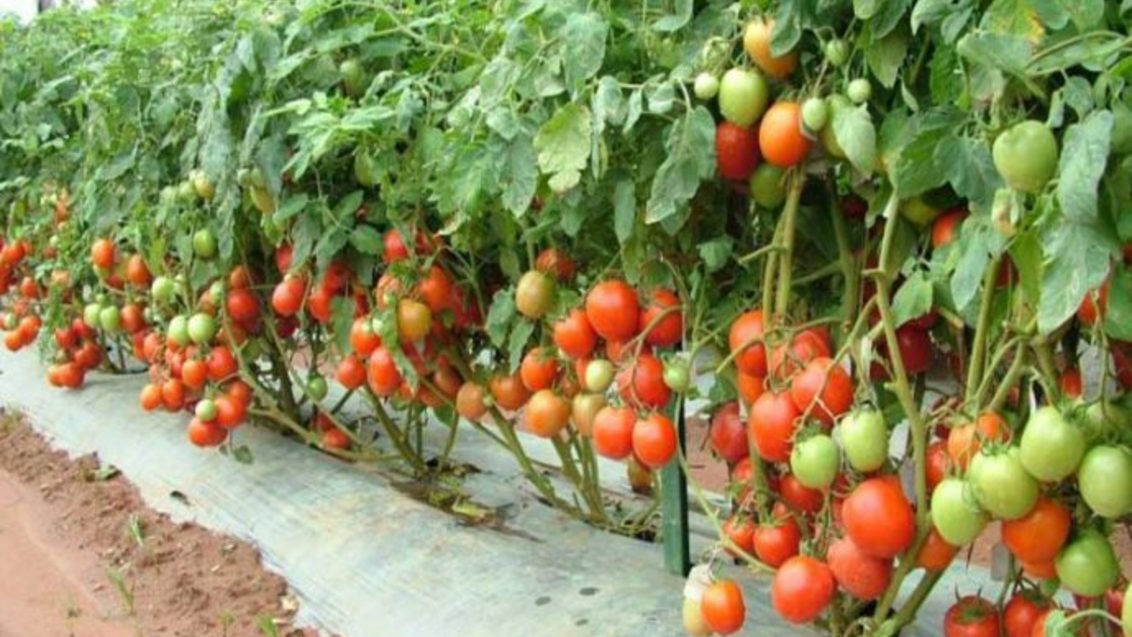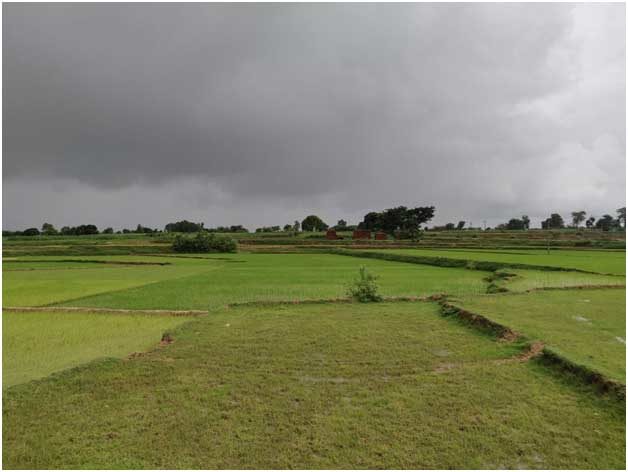Tomato seed production unit along with providing other advisory services

Rita Devi – Young Entrepreneur – Syngenta Foundation, India
Rita Devi, 28 years old, is a young entrepreneur from Gola Block, District Ramgarh, Jharkhand. Rita started her enterprise in 2017 by aggregating the produce of small farmers and connecting them with traders. Rita, in association with Syngenta, had also started a tomato seed production unit along with providing other advisory services to the farmers in her area.
Today, Rita’s small and steady steps into agri-entrepreneurship have earned her a national award and increased investible capital, helping her diversify her business earning an annual income of over 2.5 lacs to 3 lacs.
To understand the challenges, opportunities and strengths posed both by environmental and personal factors a deep dive into such factors is pertinent.
Location and Demographic factors
Gola Block of Ramgarh district has a total population of 149,810 as per the Census 2011. Out of which 76,765 are males while 73,045 are females. In 2011 there were a total of 28,485 families residing in Gola Block. The male literacy rate is 65.68% and the female literacy rate is 45.41% in Gola Block.
Gola Block is an entirely rural block, 64.3% of workers describe their work as Main Work (Employment or Earning more than 6 Months) while 35.7% were involved in Marginal activity providing a livelihood for less than 6 months. Of 63,637 workers engaged in Main Work, 23,200 were cultivators (owner or co-owner) while 8,039 were Agricultural laborers. Around 30% of the total population belong to the Scheduled Tribes.
Climate: The area lies in the sub-humid region of Chotanagpur Plateau and enjoys a semi-extreme type of climate. The day temperature rises around 40 °C during the summers and drops down to around 10 °C during the winter.
Soils: Mainly two types of soil found -Red Soil and Sand loam. Most parts of this district are full of forests and stones. The cultivable land can be divided into two parts namely – Upper land and Lower land. The lands situated on the banks of rivers are fertile. One can get a good crop even after using a lesser amount of fertilizers in these lands. But the upper land is barren. A huge amount of fertilizers and irrigation are required for cultivation in these lands. Rabi and Kharif crops are generally sown here. The main occupation of the people of Ramgarh is cultivation. There are two main agricultural seasons in the district, 1) Kharif, and 2) rabi.
Rice, maize, ragi, fruits, and vegetables are the main crop of the district. The Kharif season starts from the third week of May and lapses till the end of October followed by the Rabi season. The cultivable area forms about 39 percent of the total area of the district. Non-food crops mainly consist of oilseeds. The area under cash crops (sugar cane, etc.) is small.
There are fewer organized markets in the district and sale and purchase in the rural areas usually take place in the haats/markets spread over the district. Thehaats are the local markets where the local produce is generally bought and sold.
Challenges in the area
Small and fragmented landholdings are prominent in Rita Devi’s village, Dundigachi, with average farm sizes being as low as 10 decimals (1 acre = 100 decimals). Farmers would rely on selling paddy produce at MSP or on forest-based products for their livelihood. Some farmers also produced potatoes and onions, however, they did not get a fair price for their produce due to no storage facilities. The village also faces a significant issue of access, being deep into the hinterland, the main road is at about 10kms from the village.

Image 1: Small Plots of Paddy Fields at DundhiGachi Village, Gola Black, Ramgarh District, Jharkhand
Early Days – Stint with PRADAN
Rita Devi completed her undergraduate degree and got married in 2008. In 2009 she joined a local NGO, PRADAN, and became a member of a Self Help Group.
Self Help Groups (SHGs) are small groups of poor people. The members of an SHG face similar problems. They help each other, to solve their problems. SHGs promote small savings among their members. Rita Devi along with 10 other women, saved 10 INR (0.14 USD) with the group. Rita was entrusted with the responsibility of fund management and for regular meetings with the group.
In a couple of years, Rita Devi also took up responsibility in the Women Empowerment and Justice Committee in the village thus she came in close touch with many women farmers and developed a trusted relationship. However, this engagement was on a pure volunteer basis. Rita did not earn any stipend from performing these roles. Little did she know that the development of such social capital will help her run her business in the near future.
Agri Entrepreneur Initiative
In 2017, Rita Devi’s name was suggested by the community to get trained under Syngenta Foundation India’s AgriEntrepreneurship Initiative.
On being asked why the other women did not join the program, Rita said, “They did not want to take up entrepreneurship and wanted a job with a steady income. They were all scared about starting a business.”
Rita Devi boldly took a plunge and undertook a 45-day residential training held at Ranchi. Here she was trained under the aegis of Syngenta Foundation India and was provided with certification at the end of the course.
On returning from the course, Rita Devi registered a total of 200 farmers, of which she works very closely with around 90 farmers.
Given that some farmers took up onion production however did not earn a remunerative rate for their produce, Rita took to her mentor, Mr. Satyajit Patil, for advice on this practice. Patil suggested that a late Kharif crop of onion should be produced as that will help farmers capture a low supply time-period.
To convince farmers, Rita Devi formed a group with 5 farmers and they took up late Kharif onion production. The market price they received for 20-30% higher than the regular market price. This helped her gain farmer trust and slowly Rita started helping farmers with the marketing of their other products also. Rita has helped over 244 farmers for onion production.
This market linkage helped her earn a yearly income of INR 3,000 – INR 5,000 (approx. $50) in a month. While this was an additional income, it was certainly not sufficient for Rita and her family of 4, including her two young sons.
“There is terrible hardship and anxiety trying to support a family on INR 3,000 (approx. $50) per month”, she says. Rita took up additional training through SFI’s center of excellence for seed production.
Seed production is extremely demanding. It requires strict attention to detail and processes to maintain genetic purity. It also demands a sizable up-front investment. Rita produces hybrid tomato seeds. On her quarter-acre, the five-month process from the first time sowing to selling costs around INR 120,000 ($1800). OF that, about INR 70,000 go on building the protective structure for seed cultivation, with shade nets and bamboo. SFI partners with IDBI Bank to offer low-interest credit to AEs and other smallholders. Thanks to the combination of a loan, a buy-back arrangement with SFI, and a contribution from her family, Rita raised the money to begin seed production.
With guidance from SFI project officer Satyajit Patil, she earned INR 160,000 (US$2400) in her first season. A further INR 20,000 came from cultivating vegetables during the rest of the year. This substantial increase in annual income enabled Rita to repay her loan in only a year. Neighboring farmers quickly noticed her change in fortunes. Rita’s farm is now a regular venue for educational visits by farmers, NGOs, and other organizations eager to learn from her experience. Seed production has changed the lives of Rita and her family, and now looks set to change her community, too.
Portfolio Change and Diversification
Rita Devi’s husband worked as a daily wage laborer in nearby areas. However, her earnings helped her in starting other smaller ventures that are operated by her husband now. They started a small tent company and also bought a pick-up van that they regularly rent out. These two ventures help them earn over INR 3, 00,000 (US$ 4225) – INR 3,50,000(US$4,929) annually.
With her growing popularity fueled by a strong relationship with farmers, many organizations started reaching out to Rita Devi as a key point of contact for last-mile delivery of services.
Under Jharkhand State Government’s rural livelihood program, JOHAR, Rita Devi has been instated as the secretary of a Producer Group of 72 women farmers. Her role is to promote high-value agriculture and her training helps her in disbursing the right techniques and skills. She earns a commission on aggregating produce under this scheme.
While earning avenues for Rita Devi have tremendously increased, her business portfolio has shifted to a more commission-based portfolio. Larger, risky initiatives such as the seed production unit are seen to be abandoned, however, other activities such as a smaller group nursery, supplying of inputs for a commission, and market linkage of produce have been taken up.
